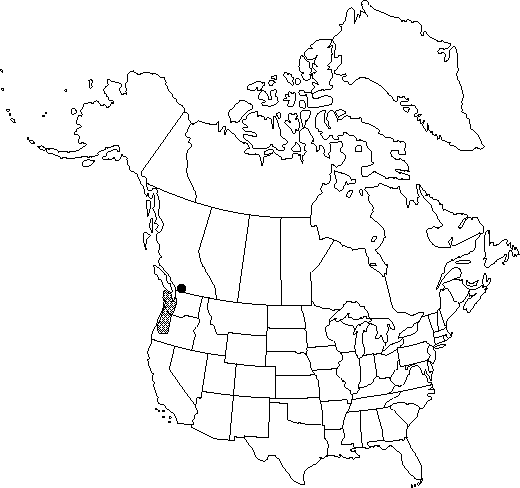Cimicifuga elata
in J. Torrey and A. Gray, Fl. N. Amer. 1: 316. 1838.
Stems 120-180 cm, sparsely puberulent, glandular, or lanate. Leaves: petiole angled, to 40 cm, deeply and broadly grooved adaxially, glabrous or densely pubescent in groove. Leaf blade 2-ternately compound; leaflets 9-27; terminal leaflet of central segment ovate to orbiculate, often 2-3-lobed, 8-18 × 9-23 cm, with 5-7 prominent veins arising basally, base deeply cordate, margins coarsely dentate to serrate, teeth gland-tipped, apex acute to acuminate, surfaces abaxially pubescent, adaxially glabrous; other leaflets 5-15 × 7-20 cm. Inflorescences erect panicles of 4-14 racemelike branches, 7-17 cm, glandular to lanate; bracts 3, subtending pedicel, central bract largest, lance-subulate, lateral bracts ovate-deltate; pedicel 1-8 mm, densely pubescent, bracteoles absent. Flowers: sepals 5, white or pinkish; petals absent; stamens 20-30; filaments 5-6 mm; pistils 1-3, sessile, glandular-pubescent; style short; stigma 0.5 mm wide. Follicles usually 1(-3 in proximal flowers), sessile or nearly sessile (stipe 0-2 mm), oblong, ± laterally compressed, 8-12 mm, thin walled. Seeds reddish to purplish brown, lenticular, 2 mm, usually verrucose, rarely with very short scales. 2n = 16.
Phenology: Flowering summer (Jun-early Aug).
Habitat: Moist, wooded slopes, damp forest margins and roadsides, along shaded streams, rather open to closed woods, mountain hemlock habitats
Elevation: 60-900 m
Distribution

B.C., Oreg., Wash.
Discussion
Of conservation concern.
Cimicifuga elata has the most extensive range of the three western North American species. It is very likely to be threatened by human activities. Even though a number of historic records occur for this species and its preferred habitat is fairly extensive (albeit not undisturbed), the number of colonies actually known to exist is not great. In addition, few of these populations are of sufficient size and extent to be viable over the long term.
Selected References
None.